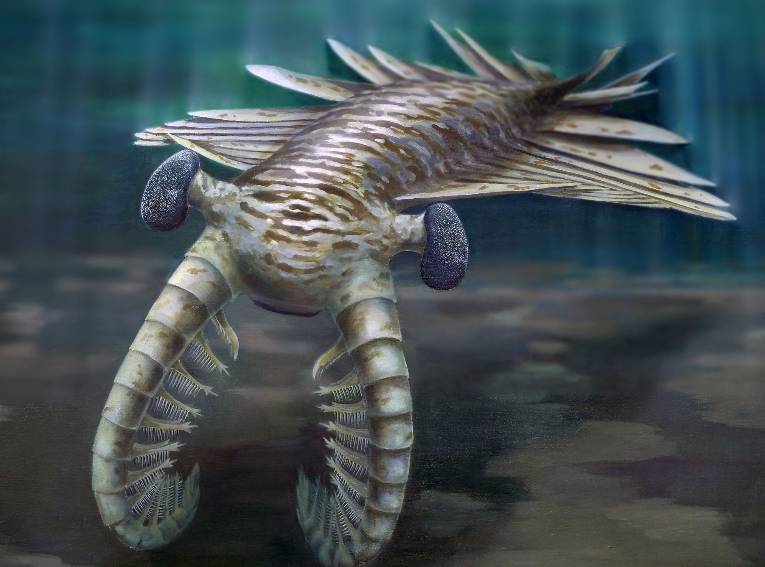A prehistoric sea predator had better vision than most of its modern descendants, scientists have discovered. Fossilised eyes of the giant shrimp-like Anomalocaris have been found by palaeontologists excavating the Emu Bay shale on Kangaroo Island, South Australia.
Dr John Patterson, of the University of New England, New South Wales, who led the group, says, "Anomalocaris is the stuff of nightmares and science fiction films. It is considered to have been at the top of the earliest food chains because of its metre-long body, the formidable grasping claws at the front of its head, and its circular mouth with teeth-like serrations. And this new discovery confirms that it had superb vision to support its predatory lifestyle."
The international team, whose findings are published in the journal Nature, discovered that Anomalocaris' 2-3cm oval eyes are made up of at least 16,000 hexagonal-shaped lenses, that are, in turn, arranged in bigger hexagonals.
Dr Paterson explains, "The number of lenses and other aspects of their optical design suggest that Anomalocaris would have seen its world with exceptional clarity while hunting in well-lit waters."
Anomalocaris used its fearsome claws to prey on warm water creatures 515 million years ago.
In previous fossil discoveries only the outline of Anomalocaris' eyes remained, but the new fossil had its lenses intact. Its compound eyes put it in the arthropod family, which contains shrimps, lobsters, crabs, scorpions and spiders.
The sea creature's eyes belong to an earlier period of the 'Cambrian explosion' in evolutionary terms, but as there is no evidence of eyes in the pre-Cambrian period, it suggests complex eyes developed extraordinarily quickly. As Dr Paterson sums it up, "In the geological blink of an eye".
The only one of today's arthropods that has clearer vision than the Anomalocaris is the dragonfly.
The team previously found a similar eye fossil at Emu Bay, but did not know which Arthropod it came from.
Dr Paterson concludes, "The existence of highly visual hunters within Cambrian ecological communities would have influenced the 'arms race' that developed between predators and their prey during this important phase in early animal evolution more than 500 million years ago."










